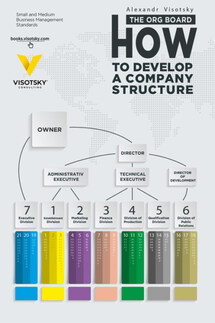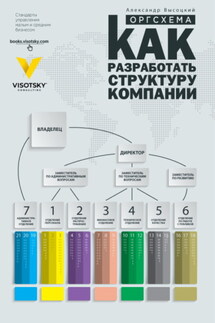The org board. How to develop a company structure - страница 10
If your company or division has several completely different types of customers or products, you will have to conduct multiple surveys. For example, you sell electric tools both wholesale and through your own retail stores. Essentially, you have two different products. In this case, these two different VFPs will provide two different types of clients, one type for each product. The easiest way to survey the retail customers is in a store. As far as the wholesalers, you will most likely have to survey them by phone.
Here’s one of the secrets to successfully conducting surveys on the product’s value – do not give clients a survey to fill out. In this case, a written survey will not yield usable responses and is a waste of time and money. For a survey with usable answers, you need personal contact. And since this survey regards the company’s product that you are personally responsible for, I recommend that you do it yourself. This may sound strange, but my experience shows that when such a survey is done by employees, they miss very important details and the survey loses some of its value. The good news is that you do not need to survey hundreds of clients. From experience, it is sufficient to survey just a dozen or two. If you ask the correct questions and elicit honest answers, you will find that the responses are very similar. Another advantage of doing the survey yourself, is that the clients respond much more readily and openly to the head of the company, which greatly speeds up the process.
So, write the questions for your survey. Then head to the sales department and get a list of customers who: have recently bought something and those who stopped buying. Or you can simply go down to the retail sales space or office to take action. You are in for an adventure! Most likely, you will learn something new about your own VFP, and you will get a much clearer and precise picture of it. Then you will be able to tell the staff about the results of your study. When you convey to them exactly what the company or division’s VFP is, you will find that that one action improves performance.
Chapter 4
Product and types of exchange
I often see phrases such as, “a satisfied customer", "high-quality service", or "a customer who comes again and brings friends” in the wording of a company product. However, this phrasing doesn’t convey the product’s value, they only declare the intention to do a job well. When customers order services or buy products, they expect a specific thing. Ask yourself, when you go to the dentist, what do you want to get for your money? In any business, we strive to satisfy our customer. The value of that is obvious – customer satisfaction strengthens the company's image and helps ease our work. But the customer doesn’t pay for happiness, he pays for a specific value. The dentist gives us beautiful and healthy teeth, plus a comfortable treatment with long-lasting results. We don't pay him simply because we are “satisfied and will come back to him."
Another dangerous term in product wordings is "high-quality". It should only be used when an industry has particular standards that are generally known and understood. Otherwise the customer’s understanding of "high-quality" can be completely different from the employee’s understanding.
When I was consulting printing companies, I found that the company and its customers had different ideas on what was considered "high-quality printing". These differences created a lot of problems when orders were delivered to customers. When the VFP of the company was worked out and phrased as, “printing jobs performed on time and in accordance with ISO standards”









